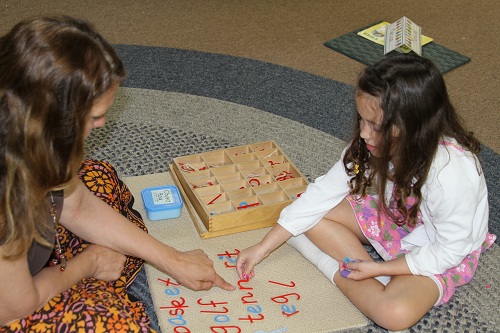The Elementary School Journey Begins Kindergarten is the beginning of your child's elementary school journey. Our full-day program offers a warm and personal environment with high academic goals in reading and mathematics. Children receive individualized lessons, allowing them to develop specific academic abilities and interests while progressing at a comfortable pace. Our teachers form a personal bond with each student to provide social, emotional and academic support through this exciting time. Kindergarten is the beginning of your child's elementary school journey. Our full-day program offers a warm and personal environment with high academic goals in reading and mathematics. Children receive individualized lessons, allowing them to develop specific academic abilities and interests while progressing at a comfortable pace. Our teachers form a personal bond with each student to provide social, emotional and academic support through this exciting time. The Kindergarten curriculum covers the following areas: Practical Life: These exercises help children develop a sense of order, concentration, coordination, and independence. By learning skills such as cleaning, plant care, tying shoes, transferring solids and liquids and sorting, the child learns care of self and their environment. They develop self-esteem based on accomplishing tasks that they see adults perform. Sensorial: Specialized materials challenge a child’s acute senses. Exercises in identification, matching, and gradation help define and refine sensory awareness. This acuity helps prepare the child for success in reading and math. Language: Language: Pre-reading exercises develop the fundamental skills necessary for proficient reading and spelling. These include matching, rhyming, opposites, visual closure, sequencing, categorizing and patterning. Once mastered, children move to recognition of letter symbols and sounds. Next, children learn to blend words together. Alternating between books and materials, children develop decoding and encoding skills, necessary for proficiency in reading and spelling. Math: The use of incredible Montessori materials provides an enjoyable approach to building a solid math foundation. Exercises begin with establishing the concept of counting. This is followed by number symbol recognition. Once the concept of numeration is learned, exercises introduce a variety of math concepts including: addition and subtraction, inequalities, measuring, fractions, odd/even, geometry, skip counting, squaring and the decimal system. Geography:: This is a great example of our integrated approach to learning. This area touches on physical science, astrology, geo/political organization and world culture. The curriculum begins by building an awareness of the components land, water, and air. Next, the solar system is introduced; then back to earth to learn about the physical and cultural aspects of each continent. Exercises include readings of stories and factual books, building costumes, art projects, photographs and map work. Zoology: In another area of integrated learning, children first learn the classification of living and non-living, plant and animal and vertebrate and invertebrate. Next is an in-depth study of invertebrates and vertebrates. The next focus is on human needs including nutrition, exercise, companionship, communication, education, tools and shelter. The curriculum concludes with the child favorite study of dinosaurs. Botany: Initial exercises focus on learning the parts of plants and their purpose and the life cycle of plants. The next investigation is the relationship of plants and humans; what plants need and what we need from them. Finally children gain an appreciation for the outside environment by planting seeds and tending a garden. History: This area uses clocks, calendars and a personal timeline to develop a sense of time and practical organization and time keeping skills. A historical timeline is used to introduce famous artists, composers and inventors. Understanding their personal timeline in the context of the historical timeline develops both a sense of history and an appreciation for the wonders of human accomplishments and the possibilities of their own gifts to the world. Art and Music: Early exercises introduce basic art and music concepts. The children learn how to mix primary colors into secondary and tertiary colors. The children learn to keep a beat using instruments from Africa, South America, North America and Asia. Later exercises are integrated with other areas of the curriculum so that children gain an appreciation of the role of art and music in culture and history. If you would like to explore Granite Bay Montessori for your kindergarten child or would like to discuss a transfer of your older child into our elementary program, please call us at (916) 791-7849 or email us at office@gbmontessori.com. |
|
||
|
||
|

